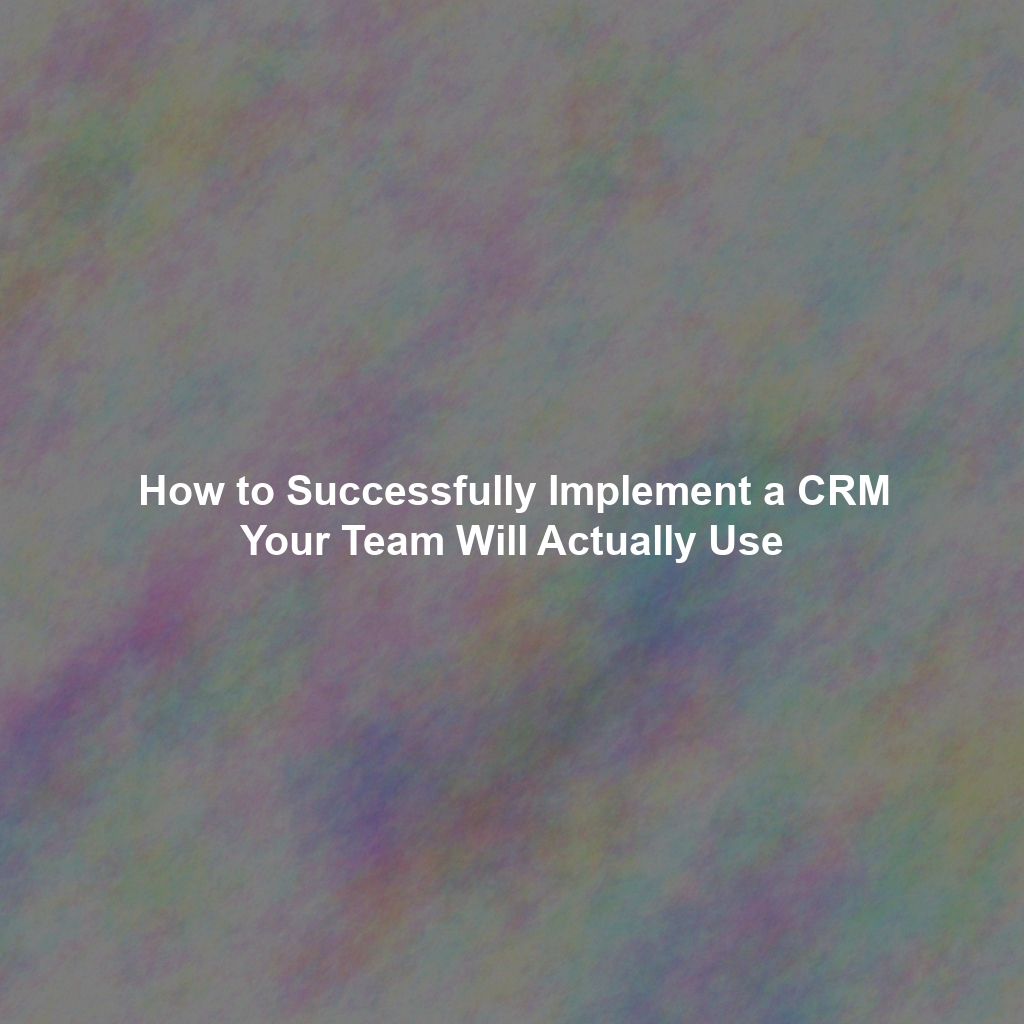Implementing a Customer Relationship Management (CRM) system promises increased productivity and stronger customer relationships. However, many CRM implementations fail, leaving businesses with unused software and frustrated employees. Success hinges not just on choosing the right system, but on meticulous planning, execution, and a focus on user adoption and change management.
Planning Your CRM Implementation
Before installing any CRM, thorough planning is essential. This sets the stage for a smooth rollout. Consider these key steps:
- Define Clear Goals and Objectives: What do you hope to achieve? Improved sales forecasting? Enhanced customer service? Streamlined communication? Clearly defined goals guide your implementation and provide measurable benchmarks for success. This clarity helps you select the features you *need*, avoiding unnecessary complexity.
- Choose the Right CRM System: Select a system that aligns with your business needs and budget. Consider scalability, integration with existing systems, and, critically, ease of use. An intuitive system minimizes the training curve and reduces frustration.
- Engage Key Users and Stakeholders Early: Involve users from different departments. Their input is crucial in shaping the implementation strategy and ensuring the system meets their specific needs. Their engagement fosters buy-in and reduces resistance. Consider setting up a cross-departmental working group.
- Develop a Detailed Implementation Plan: Create a step-by-step plan with tasks, timelines, responsibilities, and resources. Include data migration strategies, system configuration, and thorough testing procedures. A well-defined plan minimizes disruptions and keeps the project on track. Consider using project management software to help manage tasks and timelines.
Preparing Your Team for Change
Change management is crucial for a successful CRM implementation. Your team needs to understand *why* the change is happening and how it benefits them individually and collectively.
- Communicate Clearly and Frequently: Clearly communicate the reasons for adopting the CRM, the benefits, and the process. Address concerns proactively and transparently. Regular updates keep everyone informed and engaged.
- Involve Your Team Throughout the Process: Don’t just announce the new CRM; actively solicit feedback and address concerns. This participatory approach builds buy-in and minimizes resistance. Consider regular feedback sessions and surveys.
- Focus on the Benefits, Not the Challenges: Emphasize how the CRM will make their lives easier – improved efficiency, reduced workload, better customer service, and potential for career advancement.
Providing Comprehensive Training and Support
Effective training is vital for user adoption. Poor training undermines the entire implementation.
- Offer Diverse Training Options: Cater to different learning styles with online tutorials, webinars, in-person workshops, and one-on-one coaching. Make training materials readily accessible and easy to understand.
- Provide Ongoing Support: Don’t abandon your team after initial training. Offer ongoing support, including FAQs, a help desk, and readily available expert assistance. This ongoing support is crucial for addressing issues and preventing frustration.
- Encourage Experimentation and Feedback: Create a safe space for experimentation and feedback. User insights can help optimize the system. Regular check-ins and feedback sessions are essential for continuous improvement.
Measuring Success and Adapting
Measuring your CRM implementation’s success is key for continuous improvement. Don’t assume it’s working; track key metrics.
- Define Key Performance Indicators (KPIs): Establish KPIs aligned with your initial goals. Track metrics like sales conversion rates, customer satisfaction scores, lead response times, and employee productivity.
- Monitor and Analyze Data Regularly: Regularly monitor your KPIs and analyze the data to identify trends and areas for improvement. Use this data to inform decisions about system configuration and user training.
- Adapt and Iterate: CRM implementation is an iterative process. Be prepared to make adjustments based on your findings. Flexibility and a willingness to adapt are essential for long-term success.
Choosing the Right CRM for Your Needs
For businesses seeking a straightforward, user-friendly CRM, SimpleCRM (https://simplecrm.nickjain.com) is a strong contender. Its focus on core features and intuitive interface contributes to high user adoption rates, simplifying change management and training. Its pricing model also makes it a cost-effective solution for many businesses. By focusing on the essentials, SimpleCRM helps you avoid the complexities of larger platforms, allowing your team to quickly adopt and utilize the CRM effectively.
By following these steps and focusing on user adoption and change management, you can significantly increase your chances of successfully implementing a CRM system that your team will actually use, leading to improved productivity and stronger customer relationships.


